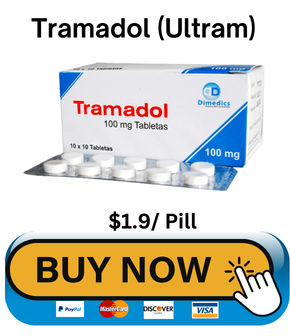Tramadol is a medication commonly used to manage moderate to moderately severe pain. It belongs to a class of drugs known as opioid analgesics, or simply opioids.
Limited Time Offer* justinmedicare.com is offering tramadol tablets at Great Pricing in USA
Pan USA Free Delivery*
2 to 3 Days Delivery
Same day Tracking
Click below to Buy
Buy Here: https://justinmedicare.com/product-category/tramadol/
Call Us on- +1(518)-261 0444
Here are some key points to know about tramadol:
Pain Management: Tramadol is primarily prescribed to alleviate pain, including postoperative pain, pain from injuries, and chronic pain conditions. It may be used for short-term pain relief or as part of a long-term pain management plan.
Mechanism of Action: Tramadol works by binding to opioid receptors in the brain and spinal cord, similar to other opioids like morphine. It also has some unique characteristics as it also acts as a serotonin and norepinephrine reuptake inhibitor (SNRI). This dual mechanism helps in pain relief.
Varieties: Tramadol is available in different forms, including immediate-release tablets, extended-release (ER) tablets, and oral disintegrating tablets. The choice of formulation depends on the nature and duration of pain.
Prescription Medication: Tramadol is available only with a prescription from a healthcare provider. It should be taken as directed by a medical professional and not shared with others.
Caution: Tramadol should be used cautiously, particularly in individuals with a history of substance abuse or addiction, as it can lead to physical and psychological dependence.
Side Effects: Common side effects of tramadol include dizziness, drowsiness, constipation, nausea, and headache. These side effects are more likely to occur when starting the medication or with dosage increases.
Interactions: Tramadol can interact with other medications, especially those that affect serotonin levels, like certain antidepressants. It’s essential to inform your healthcare provider about all the medications you are taking to avoid potential interactions.
Withdrawal: If tramadol is taken regularly and then stopped abruptly, it can lead to withdrawal symptoms such as anxiety, restlessness, sweating, muscle aches, and diarrhea. Tapering the dosage under medical supervision is usually recommended when discontinuing tramadol.
Seizure Risk: Tramadol may lower the seizure threshold, particularly when taken at high doses or in combination with other medications that lower the seizure threshold. People with a history of seizures or epilepsy should use tramadol cautiously.
Pregnancy and Breastfeeding: The use of tramadol during pregnancy and breastfeeding should be discussed with a healthcare provider, as it can have potential risks to the fetus or nursing infant.
Overdose Risk: Taking too much tramadol can lead to overdose symptoms, including respiratory depression, extreme drowsiness, and in severe cases, coma or death. It’s essential to take tramadol only as prescribed.
It’s crucial to follow your healthcare provider’s guidance when using tramadol and to use it responsibly. If you have any questions or concerns about tramadol or its use, consult your healthcare provider for personalized advice and recommendations.
